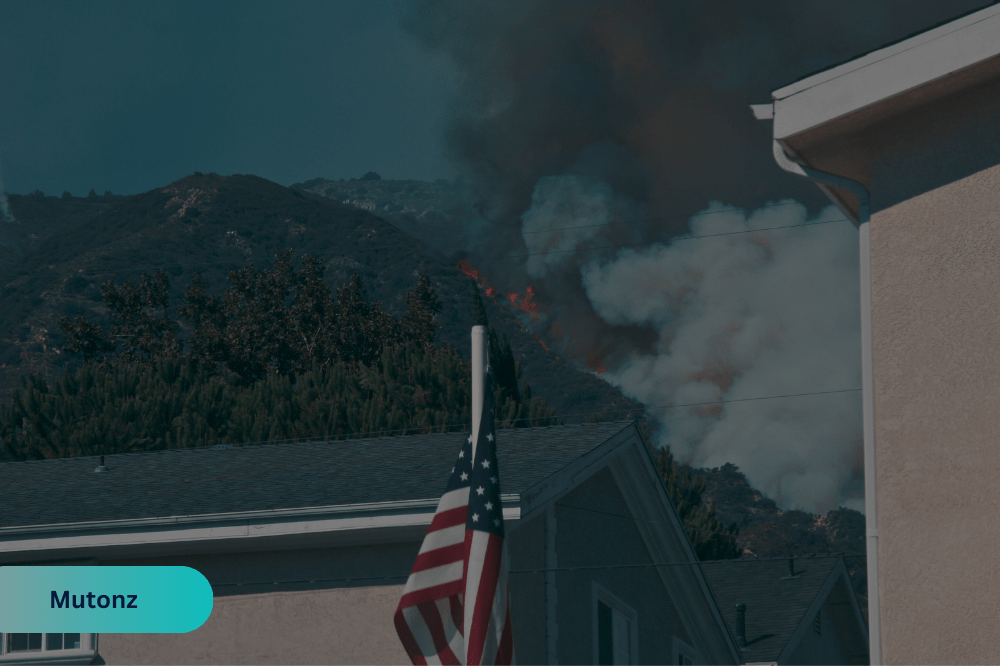Wildfires have become increasingly prevalent, posing significant
threats to homes and communities, such as recently seen in Los Angeles. As property owners grapple with the potential devastation, many ask themselves if
homeowners insurance does cover wildfires or not.
Homeowners insurance is a contract between a homeowner and an insurance company that provides financial protection against various risks to the home and its contents,
covering damage or loss resulting from events such as fire, theft, vandalism, and natural disasters.
Does Homeowners Insurance Cover Wildfires?
Well, the short answer is yes,
most standard homeowners insurance policies do cover wildfire damage. However, the
extent of coverage and specific conditions can vary based on the policy details and location. Also,
in some fire-prone areas, insurance companies have canceled or scaled back coverage.
While most does cover wildfires, there are
several important factors to consider:
- Coverage Limits and Deductibles: ensure that your coverage limits are sufficient to rebuild your home and replace your belongings. Higher deductibles can lower your premium but may require you to pay more out-of-pocket in the event of a claim.
- Exclusions and Endorsements: some policies may have exclusions or require additional endorsements for certain types of fire damage. It’s essential to review your policy to understand what is and isn’t covered.
- Location and Risk Factors: homes located in high-risk wildfire areas may face higher premiums and specific coverage requirements. Insurers may also have guidelines for mitigation measures, such as creating defensible space around your property.
- Replacement Cost vs. Actual Cash Value: policies may offer replacement cost coverage, which pays to repair or replace damaged property without deducting for depreciation, or actual cash value, which considers depreciation. Replacement cost coverage is generally more favorable for homeowners facing wildfire damage.
- Additional Living Expenses: if a wildfire leaves your home uninhabitable, your policy's ALE coverage can help cover temporary housing and related expenses during the rebuilding process.
How Does Homeowners Insurance Work?
Homeowners pay premiums to an insurance company, which in turn agrees to
cover specific types of damage or loss as outlined in the policy. In the event of a covered incident, the
homeowner files a claim, and
the insurance company assesses the damage to determine the payout based on the policy’s terms and coverage limits.
Key Components:
- Premiums: regular payments made to maintain the policy.
- Deductibles: the amount the homeowner must pay out-of-pocket before the insurance coverage kicks in.
- Coverage Limits: the maximum amount the insurance company will pay for a covered loss.
- Exclusions: specific conditions or circumstances not covered by the policy.
Types Of Homeowners Insurance
There are several types of policies,
each offering varying levels of coverage:
- HO-1 (Basic Form): covers a limited number of perils, such as fire, theft, and vandalism. This type is less common and offers minimal protection.
- HO-2 (Broad Form): provides broader coverage than HO-1, including additional perils like falling objects and damage from weight of ice or snow.
- HO-3 (Special Form): the most common type, offering coverage for all perils except those specifically excluded in the policy. This includes comprehensive protection against a wide range of risks.
- HO-4 (Renters Form): designed for renters, covering personal property and liability but not the physical structure of the building.
- HO-5 (Comprehensive Form): offers the highest level of coverage, including higher limits and broader protection for both the structure and personal belongings.
- HO-6 (Condo Form): tailored for condominium owners, covering personal property and interior structures, while the condo association typically insures the building’s exterior.
- HO-7 (Mobile Home Form): specifically for mobile or manufactured homes, providing coverage similar to HO-3 but tailored to the unique needs of mobile residences.
- HO-8 (Modified Coverage Form): designed for older homes, it covers the cost to repair or replace damage using materials and construction methods similar to the original structure.
CHECK OUT MORE TIPS



 Roubo da Big Maple Leaf: Moeda de US$ 1 mi desaparece em Berlim
Roubo da Big Maple Leaf: Moeda de US$ 1 mi desaparece em Berlim  Short-term CDs vs. Long-term CDs: Which One is Better for You?
Short-term CDs vs. Long-term CDs: Which One is Better for You?  Save at the Pump with Amazon Prime’s New Gas Discount
Save at the Pump with Amazon Prime’s New Gas Discount